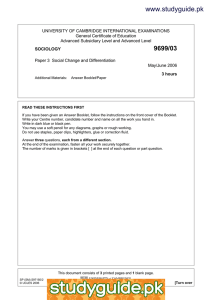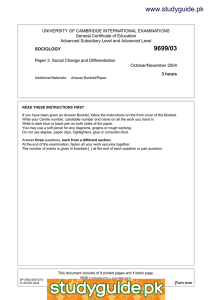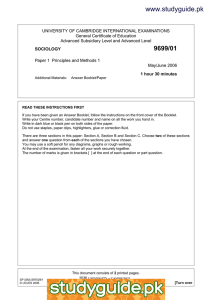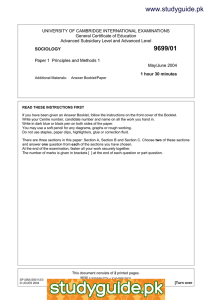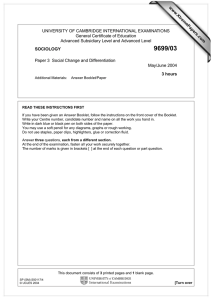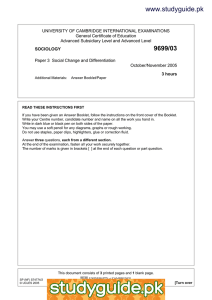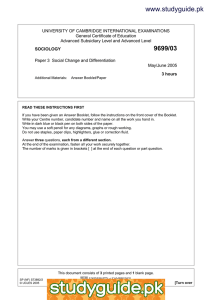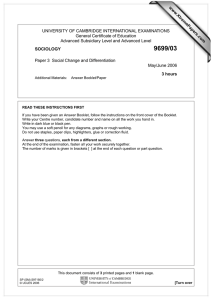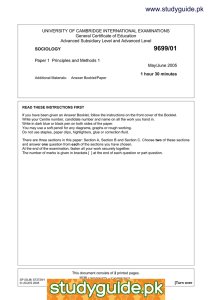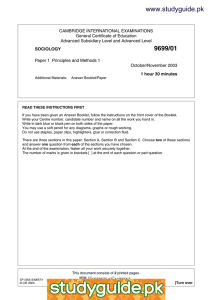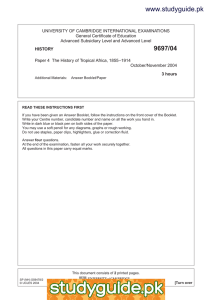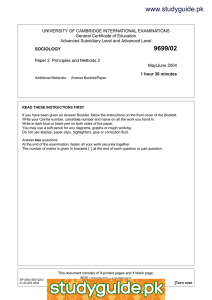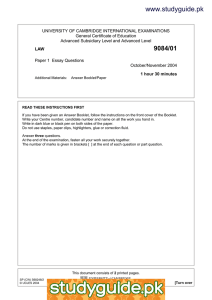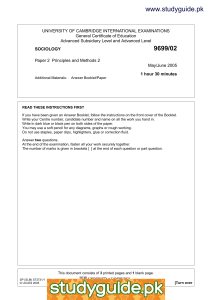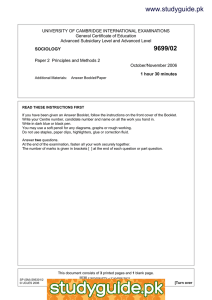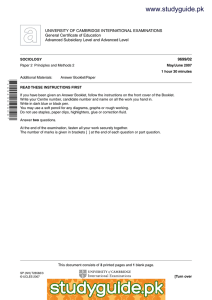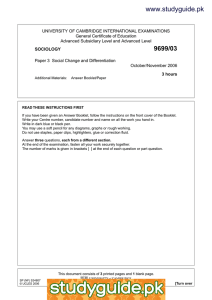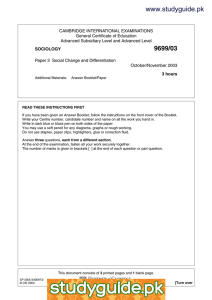www.studyguide.pk
advertisement
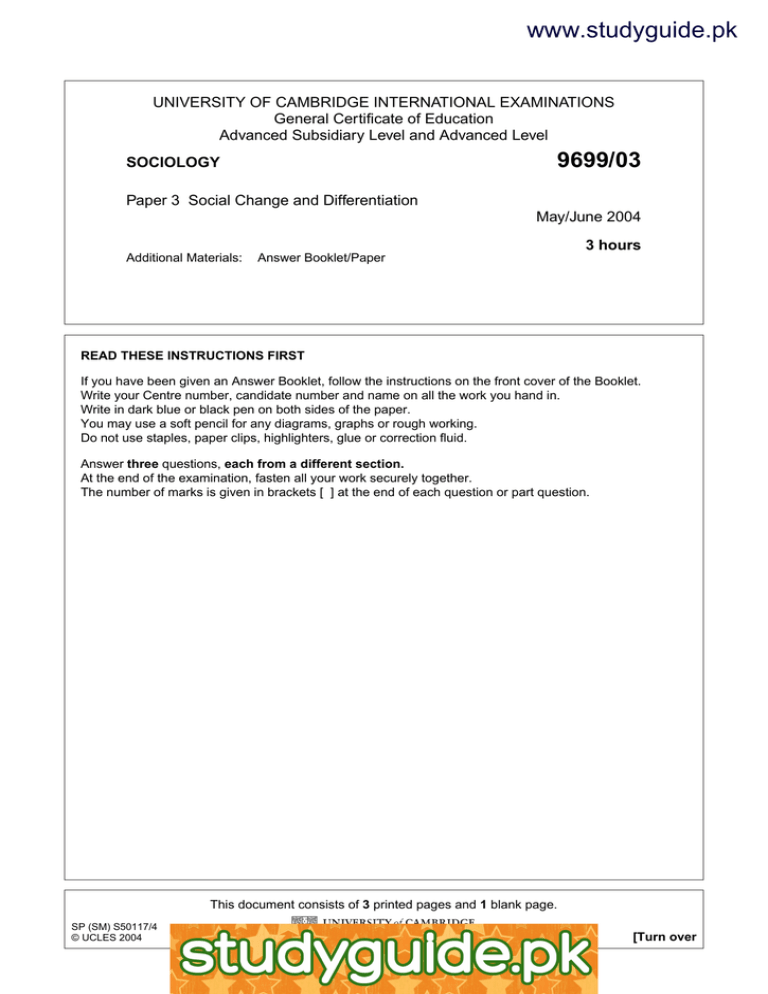
www.studyguide.pk UNIVERSITY OF CAMBRIDGE INTERNATIONAL EXAMINATIONS General Certificate of Education Advanced Subsidiary Level and Advanced Level 9699/03 SOCIOLOGY Paper 3 Social Change and Differentiation May/June 2004 3 hours Additional Materials: Answer Booklet/Paper READ THESE INSTRUCTIONS FIRST If you have been given an Answer Booklet, follow the instructions on the front cover of the Booklet. Write your Centre number, candidate number and name on all the work you hand in. Write in dark blue or black pen on both sides of the paper. You may use a soft pencil for any diagrams, graphs or rough working. Do not use staples, paper clips, highlighters, glue or correction fluid. Answer three questions, each from a different section. At the end of the examination, fasten all your work securely together. The number of marks is given in brackets [ ] at the end of each question or part question. This document consists of 3 printed pages and 1 blank page. SP (SM) S50117/4 © UCLES 2004 [Turn over www.xtremepapers.net www.studyguide.pk 2 Answer three questions, each from a different section. Section A: Families and Households 1 (a) Describe, with examples from the family, what is meant by life cycle. (b) Evaluate the extent to which the state may influence family life. 2 [9] [16] (a) Describe, with examples, how the status of children has changed in families over the last 100 years. [9] (b) Evaluate the view that in modern industrial societies there is equality between all family members. [16] Section B: Education 3 (a) Describe, with examples, inequalities that may exist within schools. (b) Evaluate the extent to which factors outside school influence educational achievement. 4 (a) Describe, with examples, the nature of the hidden curriculum. (b) Evaluate the extent to which pupil attitudes may affect the outcome of their education. [9] [16] [9] [16] Section C: Religion 5 (a) Describe the ways in which ethnicity may influence patterns of worship. (b) Assess the extent to which religious practices are shaped by economic factors. 6 (a) Describe, with examples, the differences between sects, denominations and churches. (b) Assess the extent to which religion continues to influence societies today. [9] [16] [9] [16] Section D: Crime and Deviance 7 (a) Describe, with examples, the ways in which some behaviour is labelled as deviant. [9] (b) ‘High levels of crime among some groups in society can be explained in terms of deviancy amplification.’ Evaluate this view. [16] 8 (a) Describe, with examples, the differences between sociological and biological theories of deviance. [9] (b) Evaluate the view that crime is a result of the activities of law enforcement agents. © UCLES 2004 9699/03/M/J/04 www.xtremepapers.net [16] www.studyguide.pk 3 Section E: Work and Leisure 9 (a) Describe, with examples, the consequences of ageism in work. [9] (b) Assess the consequences for employment of a global economy. [16] 10 (a) Describe, with examples, the meaning of professionalisation. [9] (b) Assess the usefulness of the concept of social closure in explaining the privileges enjoyed by professional groups. [16] Section F: Mass Media 11 (a) Describe how patterns of ownership of the mass media have changed in the last 100 years. [9] (b) Evaluate pluralist theories of the role of the mass media in modern industrial societies. 12 (a) Describe the ways in which different audiences may use the mass media. [16] [9] (b) Evaluate the view that the mass media is a major source of ideological control in modern industrial societies. [16] © UCLES 2004 9699/03/M/J/04 www.xtremepapers.net www.studyguide.pk 4 BLANK PAGE University of Cambridge International Examinations is part of the University of Cambridge Local Examinations Syndicate (UCLES) which is itself a department of the University of Cambridge. 9699/03/M/J/04 www.xtremepapers.net
